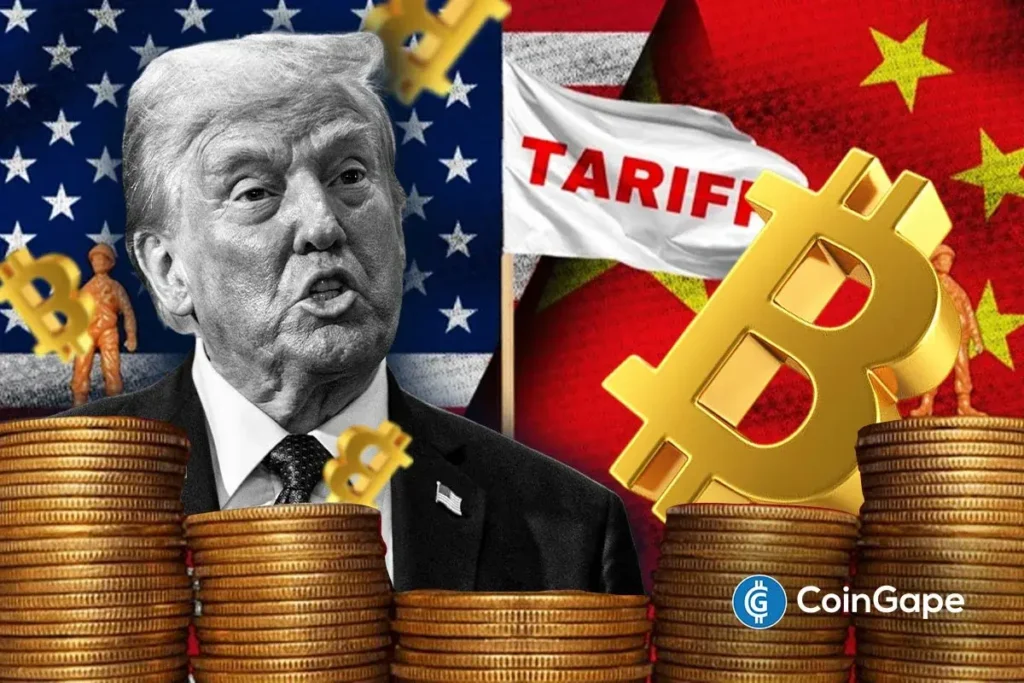Trump Insider Whale Deepens BTC Short Amid Rising Geopolitical Tensions
In recent weeks, the financial landscape has seen significant shifts, primarily influenced by geopolitical developments and investor strategies in the cryptocurrency market. Notably, the so-called "Trump insider whale" has amplified its bearish stance on Bitcoin (BTC), raising concerns amid escalating U.S.-China trade tensions. This article delves into the implications of the insider whale’s actions, the ongoing U.S.-Australia agreement to counter China’s economic dominance, and the contrasting strategies of major market players.
Increasing BTC Short Position
Recent data indicates that the Trump insider whale has further increased its short position in Bitcoin by adding an additional 200 BTC, valued at approximately $22.1 million. This decision balloons their total short to 900 BTC, amounting to around $99.6 million. With an entry price of $109,521 and a liquidation point at around $141,072, this whales’ trading strategy showcases a calculated approach amid anticipated market downturns. This latest move builds on a substantial $76 million short position established last week, underscoring the insider’s extensive exposure, now exceeding 3,400 BTC.
The financial acumen of the Trump insider whale is noteworthy, especially given their reported success in reaping over $160 million from market fluctuations that correlate with Trump’s previous tariff policies. Such investments point toward a broader market narrative where this trader seems to be bracing for a macroeconomic contraction, driven by ongoing geopolitical tensions.
Diverging Strategies Among Investors
Interestingly, while the Trump insider whale consolidates its bearish bets on Bitcoin, other influential investors are adopting a contrasting strategy. Reports indicate that another major market player has recently initiated long positions worth $255 million across both Bitcoin and Ethereum. This divergence in strategy highlights a tension in market sentiment where some investors see potential for growth, even as others anticipate declines.
This split in investment strategies raises questions about market predictions and the broader implications of macroeconomic factors. The contrasting moves underscore the unpredictable nature of cryptocurrencies and how they react to external events such as geopolitical developments.
U.S.-Australia Agreement to Counter China
In a strategic maneuver to reduce dependence on China, U.S. President Trump and Australian Prime Minister Anthony Albanese signed a critical minerals agreement recently. This pact aims to curtail reliance on Chinese supply chains for essential materials used in technologies like semiconductors and electric vehicles. Each nation has committed $1 billion over six months to support mining and processing projects, setting a minimum price floor for these vital resources.
This agreement is not just a bilateral economic strategy; it is seen as a necessary counterweight to China’s significant hold on the global rare earth supply chain. Following Trump’s previous endorsement of a nuclear submarine partnership with Australia, the collaboration symbolizes a commitment to strengthening Indo-Pacific security and establishing robust supply lines.
Heightened U.S.-China Trade Tensions
The geopolitical atmosphere has been further charged by the intensifying trade standoff between the U.S. and China. In recent developments, China introduced "special charges" targeting U.S.-built vessels while stepping up tariffs on a range of imports, including timber and furniture. The U.S. government has reciprocated, emphasizing the escalatory nature of this conflict.
Amidst these tensions, Beijing’s Ministry of Commerce has signaled a willingness to engage in a full-scale trade war, declaring its intention to "fight to the end." This rhetoric exacerbates market uncertainties and underscores the broader implications of the U.S.-China trade relationship on global economic stability.
Implications of Potential Tariffs
During a recent luncheon with Australia’s Prime Minister, Trump hinted that China could face tariffs as high as 155% if both parties fail to reach an agreement by the upcoming November 1 deadline. While the prospect of these heightened tariffs conveys a tough stance against China, Trump expressed optimism about the likelihood of finalizing a deal before this critical date.
The anticipation surrounding potential tariffs not only unsettles markets but also amplifies the pressure on China to negotiate effectively. The stakes are high, as both nations seek to protect their economic interests in a landscape fraught with tension and competition.
Conclusion: Navigating a Complex Financial Landscape
In summary, the activities of the Trump insider whale reflect a broader narrative of caution and strategic positioning in the cryptocurrency market amid escalating geopolitical challenges. The divergence between bearish and bullish strategies among major investors adds further complexity to market dynamics. Meanwhile, the U.S.-Australia agreement signifies a proactive approach to countering China’s economic influence, but the evolving trade tensions underscore the volatility that may impact both traditional markets and cryptocurrencies.
As investors navigate this turbulent landscape, staying informed about geopolitical developments will be crucial for making strategic financial decisions. The intricate interplay between international relations and market sentiment will undoubtedly shape the investment strategies of many in the coming months.


